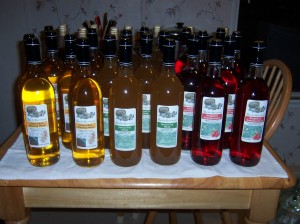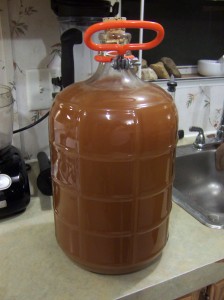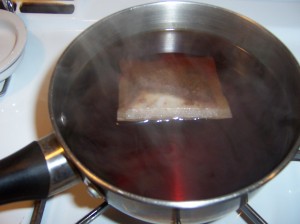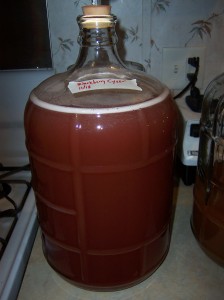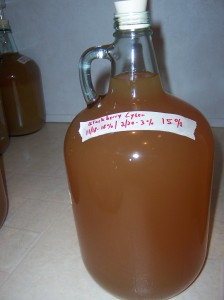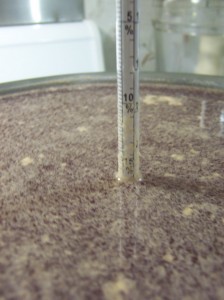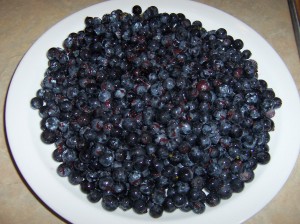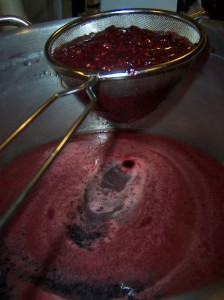The first stage of the Mad Trad Trial is complete. Tonight I racked all 4 batches into jugs, so that they will have a chance to clear before bottling. It was nice to do, because I got a chance to test each batch.
To refresh, I did 4 batches of traditional mead, all with very slight variations on the same basic recipe. To recap, and to provide new data, I present the following photo, with observations below:
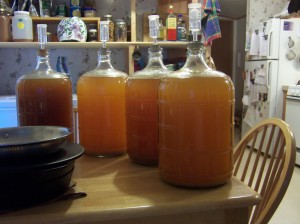
Mad Trad A
This batch was the most basic recipe doing things the way I was taught. It is the closest to a traditional mead, in that it uses water, honey, yeast, and a small amount of orange juice for the citric acid and black tea for the tannic acid. Like all the Mad Trads, the initial alcohol potential was 18%. The remaining alcohol potential is now 6%, which means this is 12% alcohol and still very very sweet.
The flavor is already excellent with a bit of that young mead harshness. The sack mead sweetness helps cover it up. The flavor of the oranges and the various notes from the honey used predominate the flavor. All in all it is a very fine, very sweet mead, but it was actually my least favorite of the bunch.
Mad Trad B
This batch was the same as the previous batch except it was made with chaga tea instead of plain spring water. The color is a bit darker, and the flavor is a bit richer. In addition, fermentation was better because this is just 4% remaining alcohol potential (after starting at 18%).
This mead is a very pleasant sweet mead, at 14% alcohol. The chaga gives the flavor more smoothness and richness. The orange and the honey are still the dominant flavors, but this one has a different layer than Mad Trad A that I find appealing. This was my 3rd favorite of the 4 at this stage.
Mad Trad C
This batch is the same as Mad Trad A, except it uses sumac rather than orange juice and black tea. It too started off at 18% alcohol potential and is now at 4%, so it too is pleasantly sweet.
The flavor here with the sumac was very light and crisp, but the honey was still very predominant. In a sense, the sumac let the honey flavor out better than the orange, which tended to dominate the flavor. This was the second best of the 4 at this stage.
Mad Trad D
This batch had both sumac and chaga, and was my favorite of the bunch. It too started off at 18% alcohol potential and is now at 4%, so it is also pleasantly sweet.
Mad Trad D has the richness of Mad Trad B, and the crispness of Mad Trad C. This was my favorite of the 4. It has the most complex, and also yet the most balanced flavor of the 4.
Next Steps
From here, these 8 gallons of Traditional Mead will settle out in their jugs before bottling, pictured here with 2 gallons of Perry Cyser that are also still clearing:
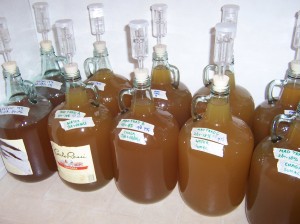
This will make 48-50 bottles of mead as soon as it clears…. hopefully soon!
UPDATE, 10 May 2012
Mad Trad B is already clearing significantly! I have 2 gallons in jugs, and another half-gallon-ish in a large bottle. All 3 are clearing, and none of the other jugs are. This is what it looks like now (saving the 2 gallon jugs for bottling, this is out of the large bottle):

It will be interesting to see how the rest of them clear…. Mad Trad B was made with chaga, and with black tea & oranges.



